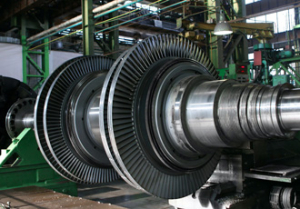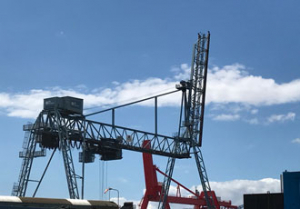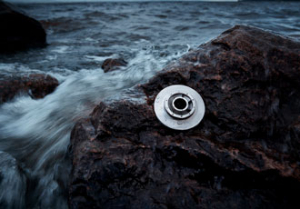The Problem of Obsolete Bearings
6th February 2009
Source:
Barden Corporation (UK) Ltd

Robin Kyte, Sales Manager at The Barden Corporation (UK) Ltd, explains why bearing obsolescence is so important when it comes to safety-critical applications such as aircraft systems and nuclear power plant applications.
Locating and sourcing a supplier of an obsolete mechanical component such as a bearing, is a growing concern for many organisations, particularly if the component is part of a safety-critical system on an aircraft or nuclear power plant application.
Sourcing a bearing for a mechanical system on a military aircraft, for example, can be a challenging process, particularly if the system is an ageing one. The aircraft itself may have been in operational service for more than 40 years and may also be projected to remain in service for many more years to come. However, if the operator needs replace the original bearings, the original supplier of the component may have ceased to exist, is now re-located overseas, or perhaps is no longer willing to manufacture the equivalent bearing in such small volumes (less than 1,000 units). This means that many aircraft (and other mechanical) system operators and managers are now facing significant bearing obsolescence issues, particularly if the quantity of bearings they require is relatively low.
In addition, there may be other design features about the bearings that make it equally unattractive, or even impossible, for a supplier to adhere to. For example, the bearing may require special materials, special lubrication, certification, special features such as tapered outside diameters, or may need to fit an Imperial chassis size.
There are similar issues in the nuclear industry too. Bearings are commonly found in nuclear power plants as part of actuation systems, which position the control rods into the fuel bundle. In an emergency situation, the control rods are dropped into the fuel bundle to absorb the reactor heat, which dictates that the bearings must not, under any circumstances, fail. This means bearing suppliers must offer full manufacturing traceability, controlled lubrication and complete retention of records, similar to the aerospace and defence industry.
The solution for the system operator is to find a bearing supplier who is able to manufacture the specified bearing to the same (or higher) quality standards as the original and who is also willing to supply in small batch sizes, anything between 10 and 500 units. Robin Kyte is a Sales Manager at Plymouth-based bearings manufacturer The Barden Corporation (UK) Ltd. The company manufactures a range of super precision angular contact and deep groove ball bearings. The focus is on special configuration bearings that add value and provide engineered solutions for the customer. As Kyte states: “In the UK and most of Europe, the problem of obsolete bearings is predominant in the military aerospace and nuclear sectors. The problem usually arises when the mechanical system is very old, usually more than 25 years. In this scenario, many customers approach Barden because we are willing to manufacture direct replacement bearings in relatively small batch sizes and we have the manufacturing capability to produce special engineered bearings. Barden also have a strict non-obsolescence policy.”
Barden bearings are manufactured and controlled under strict aerospace procedures that the company employs, providing full traceability, controlled lubrication and complete retention of records.
“Often the bearing drawings on such legacy products will define only the chassis size, with little or no information regarding the internal design, materials or tolerances. With such a basic specification, a wide range of bearings could meet the requirements, ranging from low precision, commercially-produced bearings to high precision bearings with full traceability and inspection,” says Kyte.
“Some of these bearings may be relatively inexpensive to buy, but they were never designed to operate in these types of environments or applications. Often, the buyer doesn’t actually realise that the bearing they have just purchased is not a like-for-like replacement. Certification, full traceability and quality should be the key issues here,” he advises.
He also says that some of Barden’s customers actually visit the company’s manufacturing plant to witness the correct lubrication of a bearing. “When you consider the potential risks of fitting an incorrectly lubricated bearing for a nuclear or aircraft application, you begin to understand why the customer wants to witness the lubrication themselves,” says Kyte. “Yes, the customer may pay more for our bearing compared to a commercially-produced one, but they also get a guarantee of bearing quality and know that we will produce custom bearings in small batch sizes.”
Cleanliness of bearings is also important and for this reason, Barden’s manufacturing plant in Plymouth boasts more than 1,700 square metres of clean rooms for contaminant-free assembly and inspection of bearings. The company designs and manufactures super precision bearings to a minimum of P4/ABEC 7 quality standards.
Bearing sizes range from 5mm to 250mm outside diameter. Most bearings manufactured are either angular contact or deep groove types, but the company can also now produce roller bearings.
Being able to produce bearings from special materials and coatings to suit the application or extreme environments is critical. Barden therefore offers bearing rings in SAE 52100, AISI 440C, Cronidur 30 (high corrosion resistance and high temperature operation), M50 and BG42. Balls can be made from silicon nitride, TIC-coated, zirconium dioxide or tungsten carbide. Cage materials can be specified in steel, bronze, phenolic, polyamide, polyimide, PEEK or PTFE-based. Lubricants used include hydrocarbon, synthetic esters and hydrocarbons, silicone and perfluoralkypolyether.
Barden is capable of manufacturing bearings to a geometric tolerance of P2 or better, and envelope dimensions to P4 or better. Raceway roundness is better than half a micron, with raceway surface finish better than 1 micro inch Ra.
Sourcing a bearing for a mechanical system on a military aircraft, for example, can be a challenging process, particularly if the system is an ageing one. The aircraft itself may have been in operational service for more than 40 years and may also be projected to remain in service for many more years to come. However, if the operator needs replace the original bearings, the original supplier of the component may have ceased to exist, is now re-located overseas, or perhaps is no longer willing to manufacture the equivalent bearing in such small volumes (less than 1,000 units). This means that many aircraft (and other mechanical) system operators and managers are now facing significant bearing obsolescence issues, particularly if the quantity of bearings they require is relatively low.
In addition, there may be other design features about the bearings that make it equally unattractive, or even impossible, for a supplier to adhere to. For example, the bearing may require special materials, special lubrication, certification, special features such as tapered outside diameters, or may need to fit an Imperial chassis size.
There are similar issues in the nuclear industry too. Bearings are commonly found in nuclear power plants as part of actuation systems, which position the control rods into the fuel bundle. In an emergency situation, the control rods are dropped into the fuel bundle to absorb the reactor heat, which dictates that the bearings must not, under any circumstances, fail. This means bearing suppliers must offer full manufacturing traceability, controlled lubrication and complete retention of records, similar to the aerospace and defence industry.
The solution for the system operator is to find a bearing supplier who is able to manufacture the specified bearing to the same (or higher) quality standards as the original and who is also willing to supply in small batch sizes, anything between 10 and 500 units. Robin Kyte is a Sales Manager at Plymouth-based bearings manufacturer The Barden Corporation (UK) Ltd. The company manufactures a range of super precision angular contact and deep groove ball bearings. The focus is on special configuration bearings that add value and provide engineered solutions for the customer. As Kyte states: “In the UK and most of Europe, the problem of obsolete bearings is predominant in the military aerospace and nuclear sectors. The problem usually arises when the mechanical system is very old, usually more than 25 years. In this scenario, many customers approach Barden because we are willing to manufacture direct replacement bearings in relatively small batch sizes and we have the manufacturing capability to produce special engineered bearings. Barden also have a strict non-obsolescence policy.”
Barden bearings are manufactured and controlled under strict aerospace procedures that the company employs, providing full traceability, controlled lubrication and complete retention of records.
“Often the bearing drawings on such legacy products will define only the chassis size, with little or no information regarding the internal design, materials or tolerances. With such a basic specification, a wide range of bearings could meet the requirements, ranging from low precision, commercially-produced bearings to high precision bearings with full traceability and inspection,” says Kyte.
“Some of these bearings may be relatively inexpensive to buy, but they were never designed to operate in these types of environments or applications. Often, the buyer doesn’t actually realise that the bearing they have just purchased is not a like-for-like replacement. Certification, full traceability and quality should be the key issues here,” he advises.
He also says that some of Barden’s customers actually visit the company’s manufacturing plant to witness the correct lubrication of a bearing. “When you consider the potential risks of fitting an incorrectly lubricated bearing for a nuclear or aircraft application, you begin to understand why the customer wants to witness the lubrication themselves,” says Kyte. “Yes, the customer may pay more for our bearing compared to a commercially-produced one, but they also get a guarantee of bearing quality and know that we will produce custom bearings in small batch sizes.”
Cleanliness of bearings is also important and for this reason, Barden’s manufacturing plant in Plymouth boasts more than 1,700 square metres of clean rooms for contaminant-free assembly and inspection of bearings. The company designs and manufactures super precision bearings to a minimum of P4/ABEC 7 quality standards.
Bearing sizes range from 5mm to 250mm outside diameter. Most bearings manufactured are either angular contact or deep groove types, but the company can also now produce roller bearings.
Being able to produce bearings from special materials and coatings to suit the application or extreme environments is critical. Barden therefore offers bearing rings in SAE 52100, AISI 440C, Cronidur 30 (high corrosion resistance and high temperature operation), M50 and BG42. Balls can be made from silicon nitride, TIC-coated, zirconium dioxide or tungsten carbide. Cage materials can be specified in steel, bronze, phenolic, polyamide, polyimide, PEEK or PTFE-based. Lubricants used include hydrocarbon, synthetic esters and hydrocarbons, silicone and perfluoralkypolyether.
Barden is capable of manufacturing bearings to a geometric tolerance of P2 or better, and envelope dimensions to P4 or better. Raceway roundness is better than half a micron, with raceway surface finish better than 1 micro inch Ra.
Similar articles
More from Barden Corporation (UK) Ltd
- Super precision bearings guarantee accuracy and flexibility of surgical and robot articulated arms 28th May 2009
- The Problem of Obsolete Bearings 6th February 2009
- New website for super precision bearings 13th August 2008
- Emergency bearings for magnetic bearing systems 16th July 2008

-(1)ed.jpg)










Write a comment
No comments